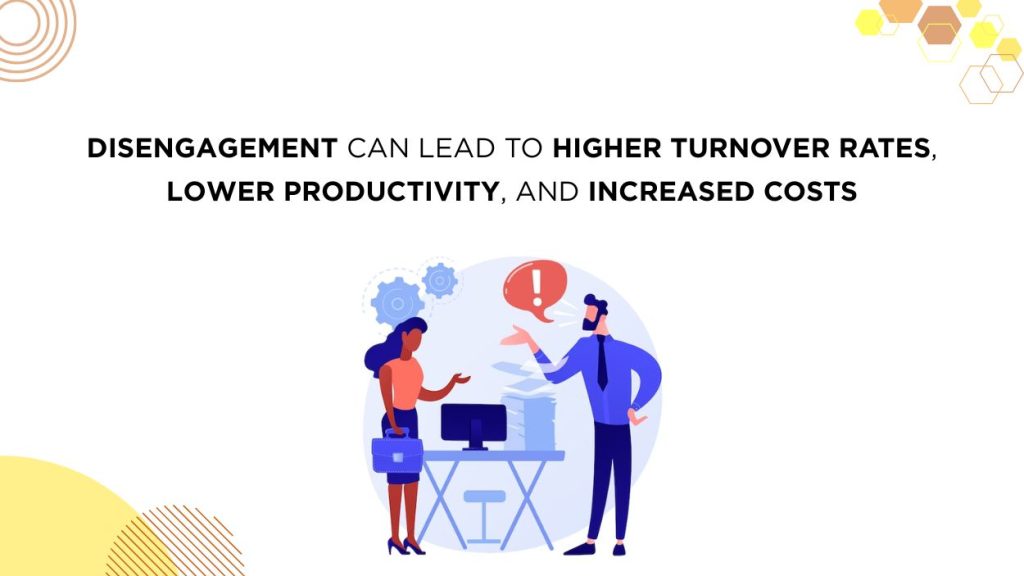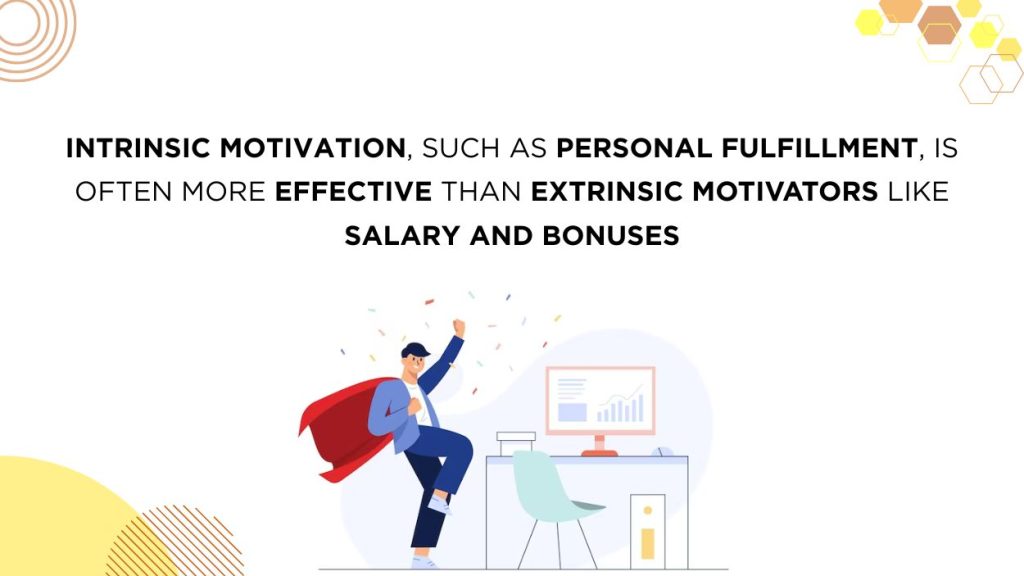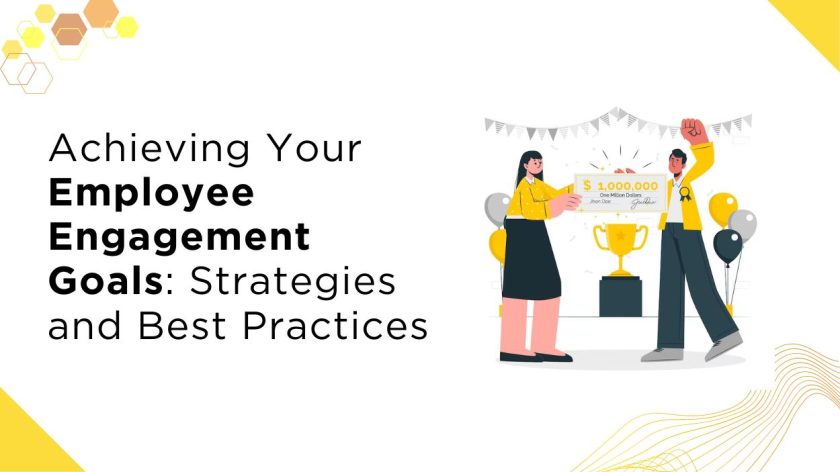A key element in every organization’s success is employee engagement. It speaks to the degree of dedication and involvement workers have for their jobs and the business. Businesses must establish goals and endeavor to realize them.
We will go over practical methods and suggested ways in this post to help you achieve your objectives for employee engagement. Our primary goal will be to arm you with the in-depth information and resources you need to foster a work environment that encourages employee engagement and supports organizational success. This will entail developing an effective communication strategy and figuring out what drives your personnel.
The Value of Employee Engagement Objectives
Any business that wants to flourish must successfully engage its personnel. Corporate performance improves as a result of increased productivity, motivation, and dedication from employees. You can make sure you’re working toward outcomes that will be advantageous to your firm by setting clear employee engagement objectives.
The Link Between Employee Engagement and Business Performance
Multiple studies have demonstrated a significant association between employee engagement and business performance. Research indicates that highly engaged employees tend to exhibit greater productivity, loyalty to their employer, and job satisfaction. As a result, companies benefit from increased customer satisfaction and retention rates, ultimately leading to improved profitability.
The Price of Engagement
While disengaged workers can have an adverse effect on your company, they typically exhibit lower levels of commitment, productivity, and tenacity at work. Increased turnover may result from this, which could cost the company money. As a result, employee engagement must be given top priority.

Understanding What Motivates Your Employees
You must first comprehend what drives your employees before you can engage them. Extrinsic motivation comes from rewards and recognition, while intrinsic motivation comes from a sense of purpose. You may make your engagement initiatives more effective by knowing what motivates your employees and how to address their requirements.
The Role of Intrinsic and Extrinsic Motivation
An individual’s inner ambitions and objectives, such as a sense of purpose or personal fulfillment, serve as the driving force behind intrinsic motivation. Extrinsic motivation, on the other hand, is fueled by outside elements like incentives, recognition, or promotions. Understanding how intrinsic and extrinsic motivation affects employee engagement is crucial for developing a culture of engagement.

Using Employee Feedback to Understand Motivations
Employee feedback allows you to gain insight into your employees’ motives. Regular surveys, focus groups, or one-on-one talks can help you determine their levels of satisfaction, engagement, and what motivates them. This knowledge can then be utilized to tailor engagement initiatives to your employees’ specific needs.
Creating a Culture of Engagement
Fostering a healthy work environment and encouraging employee well-being requires establishing a culture of engagement. You may establish a work environment where people feel appreciated and supported by encouraging a sense of belonging and purpose.
The Benefits of a Positive Work Environment
There are several advantages to having a good work environment for both individuals and the company. It may result in better overall health, lower stress levels, and more job satisfaction. Higher levels of employee engagement and improved corporate performance may result from this.

Fostering a Sense of Belonging and Purpose
To increase employee engagement, it is crucial to foster a sense of identity and mission. Employees are more likely to be interested and dedicated to their work if they sense a connection to their coworkers and the company’s objective. This can be accomplished through team-building exercises, social gatherings, and informing employees of the business’s beliefs and mission.
Implementing Effective Communication Strategies
Engaging people and fostering a healthy work environment need effective communication. Regular communication can increase employee engagement by making them feel informed, engaged, and valued.
The Importance of Regular Communication
Maintaining staff engagement and knowledge requires regular communication. Regular team meetings, newsletters, or corporate updates help with this. You can ensure that your staff members feel important and connected to the firm by keeping them updated on corporate news, projects, and goals.

Using Multiple Communication Channels
Using several communication channels might aid in ensuring that all staff members receive your message. This method offers several possibilities to address those objectives while acknowledging that people have various communication preferences and styles. Avoiding information overload on any channel also helps prevent staff members from tuning out or missing important updates.
Measuring and Tracking Progress
The first step in attaining engagement goals is measuring and tracking employee engagement. Although there are many ways to gauge engagement levels, surveys are the most popular approach. There are many ways to conduct surveys, including online, on paper, or through interviews.

Using Surveys to Measure Engagement Levels
Surveys of employee engagement are valuable tools for assessing engagement levels. These questionnaires often include questions about work-life balance, leadership, business culture, and possibilities for professional advancement. Employee responses can help pinpoint areas needing improvement.
It is crucial to make sure that the survey’s questions are well-crafted to produce pertinent and insightful information. To promote employees giving honest feedback, confidentiality and anonymity must be maintained. After the survey is finished, the information should be examined and used to create plans for raising engagement levels.
Setting SMART Goals for Improvement
Setting attainable goals for improvement is crucial after engagement levels have been assessed. The objectives must be SMART: specified, measurable, attainable, relevant, and time-limited. The aims of the firm should be reflected in the goals, which should also consider employee demands and preferences.
All staff should be adequately informed of the goals, and advancement should be monitored and reported regularly. Celebrating achievements and milestones keeps the momentum and motivation going in the direction of reaching engagement objectives.
Conclusion:
In conclusion, any firm that wishes to promote a happy and productive work environment must develop and achieve employee engagement goals. You can create a workplace where employees feel valued and invested in the success of the business by understanding what motivates them, fostering an engaged culture, putting effective communication strategies into place, offering opportunities for growth and development, recognizing and rewarding contributions, and tracking your progress.
BRAVO, an AI-powered employee reward and recognition platform is a resource that can assist you in achieving these objectives. With the support of BRAVO, managers now have an easy way to thank and recognize staff members for their contributions, which promotes motivation and engagement. Peer-to-peer recognition, reward points, and customizable prizes are just a few of the elements that BRAVO offers to help you establish a rewarding culture in your business.
You may develop a work environment focused on engagement and growth by combining the techniques described in this article with the use of a platform like BRAVO. This will enhance productivity and help your organization succeed.
FAQs:
Q: What are employee engagement goals?
A: Employee engagement goals are specific targets set by companies to improve employee engagement levels. These goals can include increasing participation in training and development programs, enhancing communication channels, or improving recognition and reward systems.
Q: How do I set realistic engagement goals?
A: To set realistic engagement goals, start by identifying your company’s strengths and weaknesses in terms of engagement. Then, develop specific, measurable, achievable, relevant, and time-bound (SMART) goals that address those areas of improvement. Finally, regularly track and adjust your goals based on employee feedback and progress.
Q: How often should I review and update my goals?
A: You should review and update your engagement goals regularly, at least once a year, or more frequently if necessary. Employee feedback and progress should inform any adjustments to your goals.





